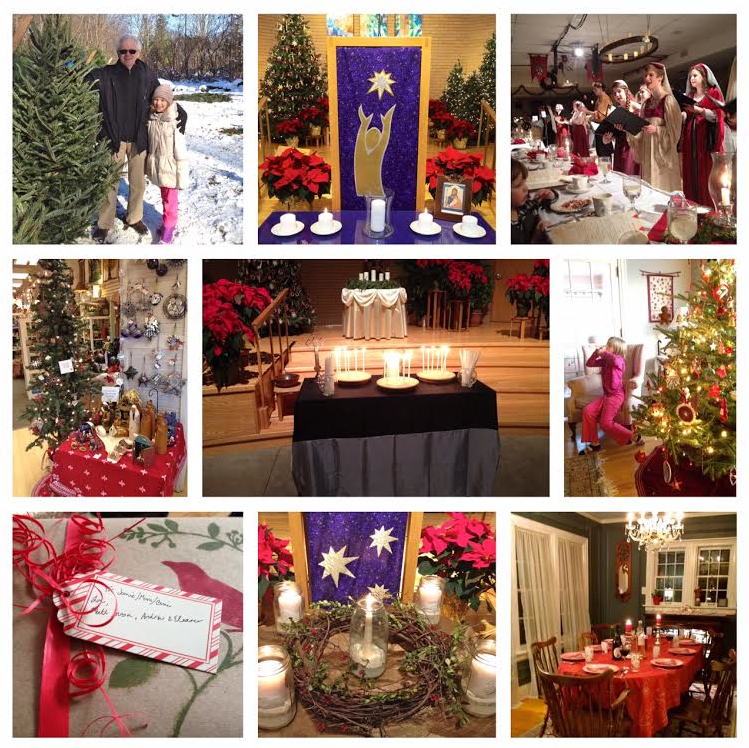Glimpses of Healing and Hope
by: Jane Bishop Halteman
November 30, 2015

How do you observe Advent at your house? When I was a child, my home church did not celebrate the season of Advent, which marks that time of waiting for the birth of the Christ child and the start of the new liturgical year four Sundays before Christmas day.
Taking note of Advent is said to enhance the celebration of Christmas for those willing to work at creating a God-focused time during what typically threatens to become a hectic period of the year.
Author Jan Richardson puts it this way: “On the journey toward Christmas, it can be tempting to race toward the light that we know is coming. Advent counsels us to wait, to pay attention to how God is present even in the shadows, long before the light arrives. Whatever the texture of the darkness we may journey through—the painful darkness of loss, grief, and suffering, or the hopeful darkness of anticipation, mystery, and dreaming—God desires to meet us there, to use even the darkness as a place of discernment, of creating, of imagining: a place where a way is made and a map begins, even when we cannot see.”
Watching and waiting, finding time to pause as we mark the advance of time during this season can be a fruitful exercise. We are acquainted with Advent wreaths and calendars, which help us document weekly or daily milestones along the approximately four-week journey between the first Sunday of Advent and the arrival of Christmas.
If children are part of the household, making fun outings or an effort to be of service can help document the passage of time. Consider excursions to pick up the tree, see a holiday-themed play or musical event, participate in KRMC’s hanging of the greens, view your town’s light displays.
As a family service project, you might make cookies to give your neighbors during Advent, donate food or cook at a local pantry, take your gently used clothing to a nearby shelter, collect outgrown toys for a nearby charity, gather a group to sing carols at a nursing home or retirement community, adopt a family for the holidays to share a meal or gifts, do a random act of kindness or pay forward a drink at a local coffee shop.
To mark movement through the season and tailor it to your own household, design activities your family will enjoy. We and our grown children and their families and friends still get a kick out of horn caroling Advent hymns as we turn our fingers into brass instruments. You might decorate your house to reveal the warmth of the season and invite in friends and neighbors, create an Advent devotional by repeating the O Antiphons, listen to meaningful Advent music, shop at a fair trade crafts shop for gifts or home décor, or explore international Christmas traditions and recipes.
Experiment with waiting in Advent by practicing waiting well in a lengthy grocery check-out line or for a frustratingly long freight train on your drive to or from work. Using triggers like these may remind you of how you want to wait in Advent.
Find ways to create and build spaciousness into your life so that you might observe the difference between chronos time (related to clocks, calendars, and schedules) and kairos time (God’s time, during which we pause to find glimpses of the Divine). As we wait during Advent for God to break into our time, we also become more intentional about developing our watching and waiting skills.
World events, grief and loss, loneliness, and a variety of other life happenings sometimes make the cultural frenzy of the weeks before Christmas a very difficult time. KRMC’s Longest Night service on December 22 will acknowledge that Advent and Christmas can be a tough time of the year.
Henri Nouwen’s The Inner Voice of Love, a book of his journal entries written during a trying period of his life, has been selected by the Henri Nouwen Society’s virtual community for their on-line Advent book discussion in 2015: “It was written during a time of recovery from a breakdown that left Henri feeling he had lost everything: self-esteem, the energy to live and work, the ability to love and be loved… even his hope in God. But out of this incredible personal anguish comes healing and hope, a light to dissipate the personal darkness in which Henri found himself enveloped.”
And it is the Advent darkness-to-light theme that made this book a good choice for this year’s virtual study guide. Take time this Advent to notice in your daily activities themes of exile and longing, of waiting in the darkness, of watching for the light, as you seek to be ever more aware of God’s movement in the world.